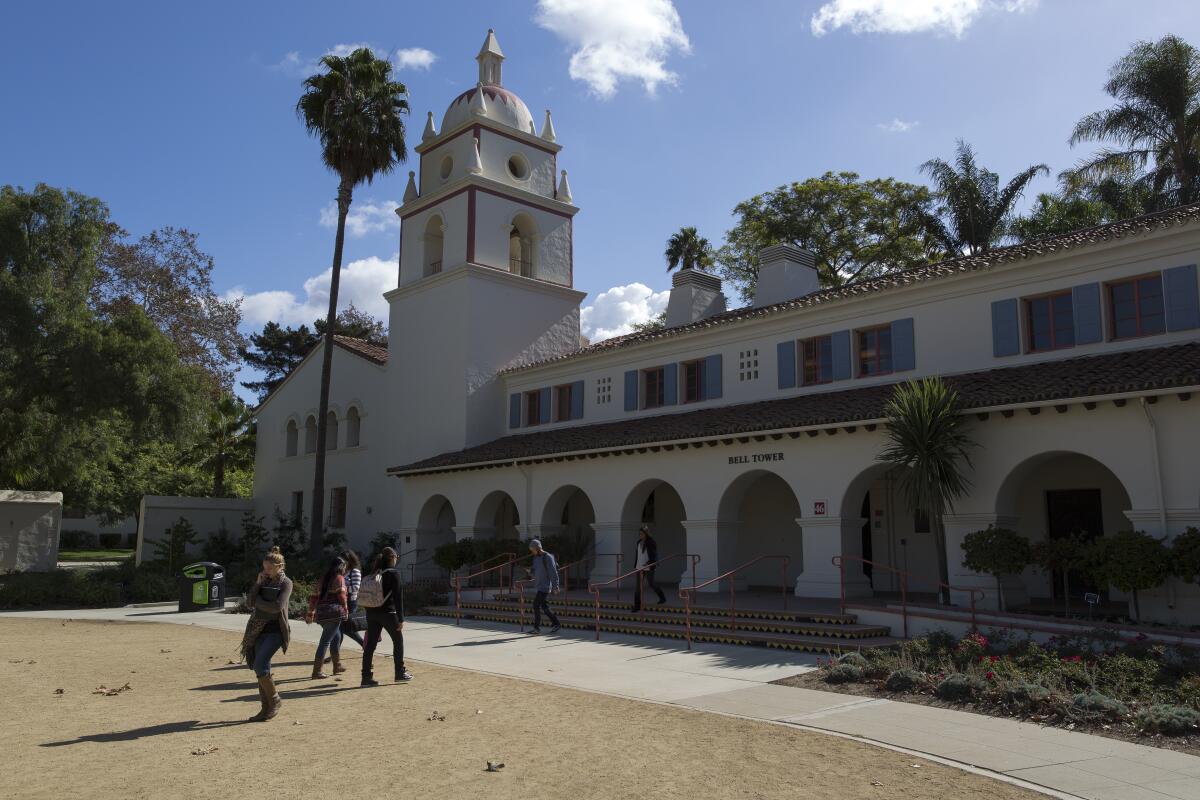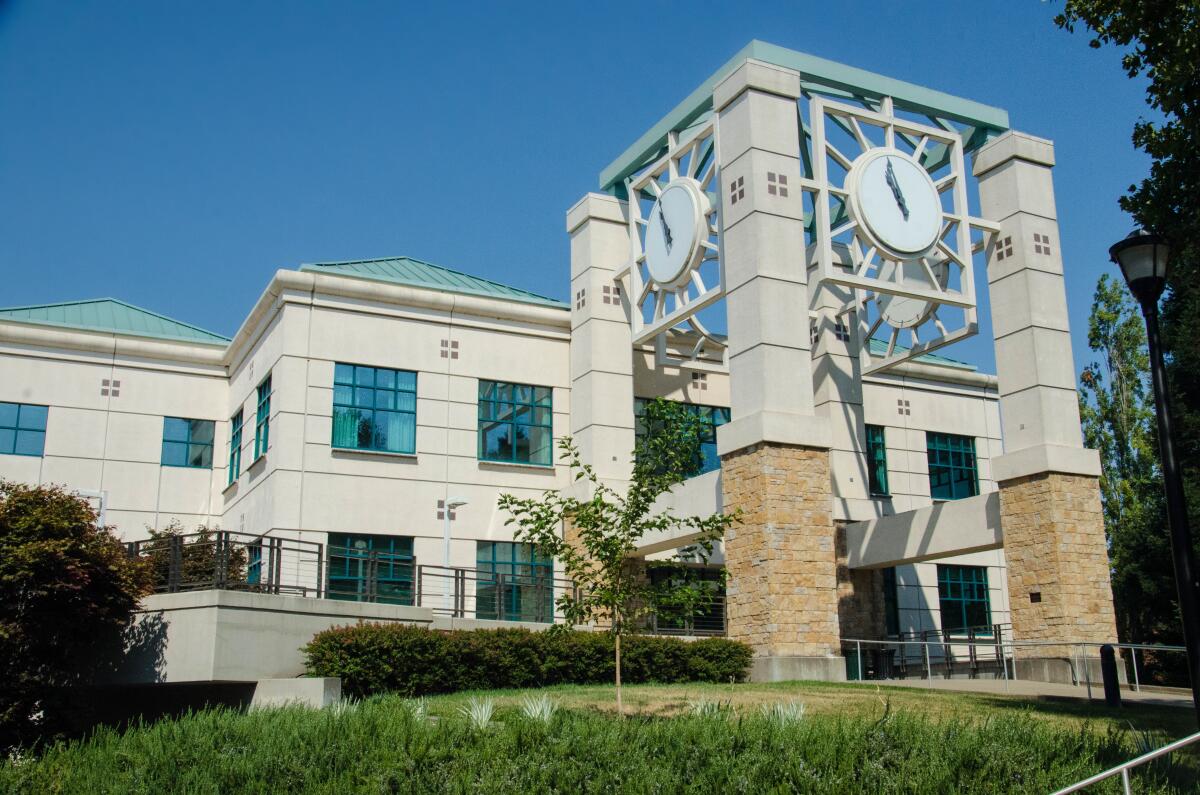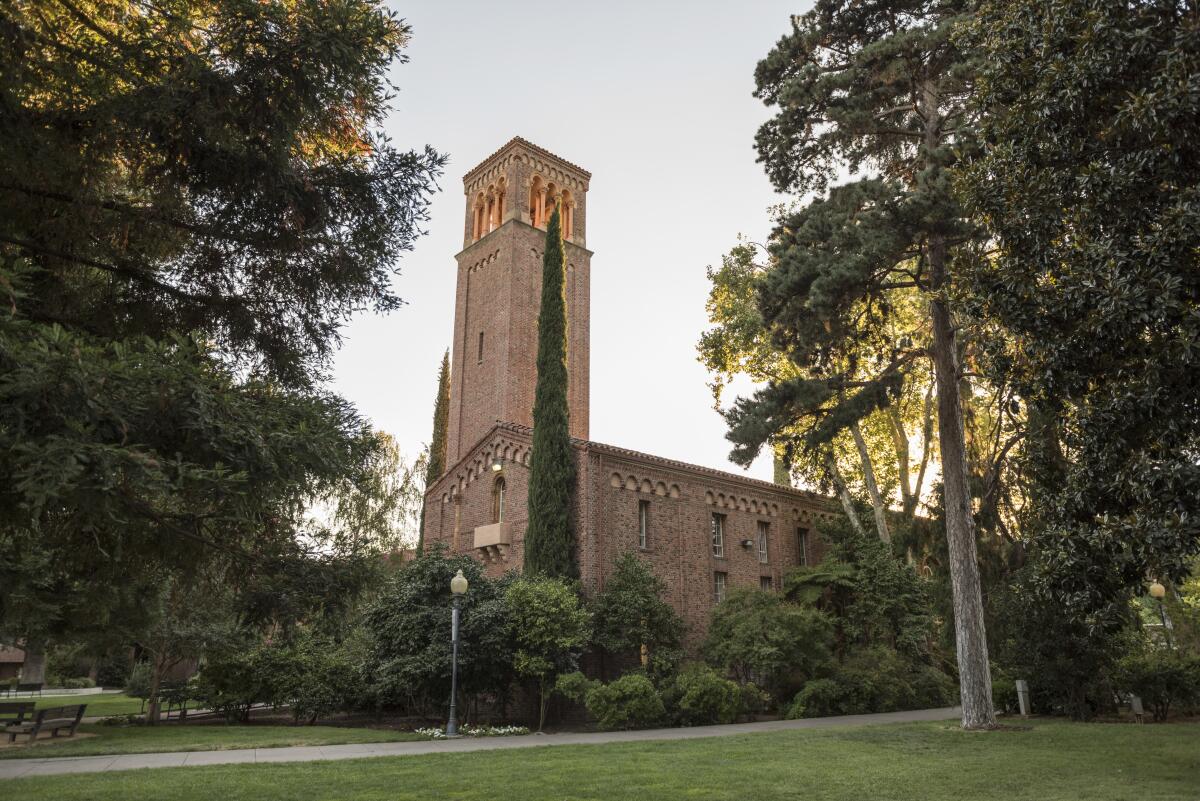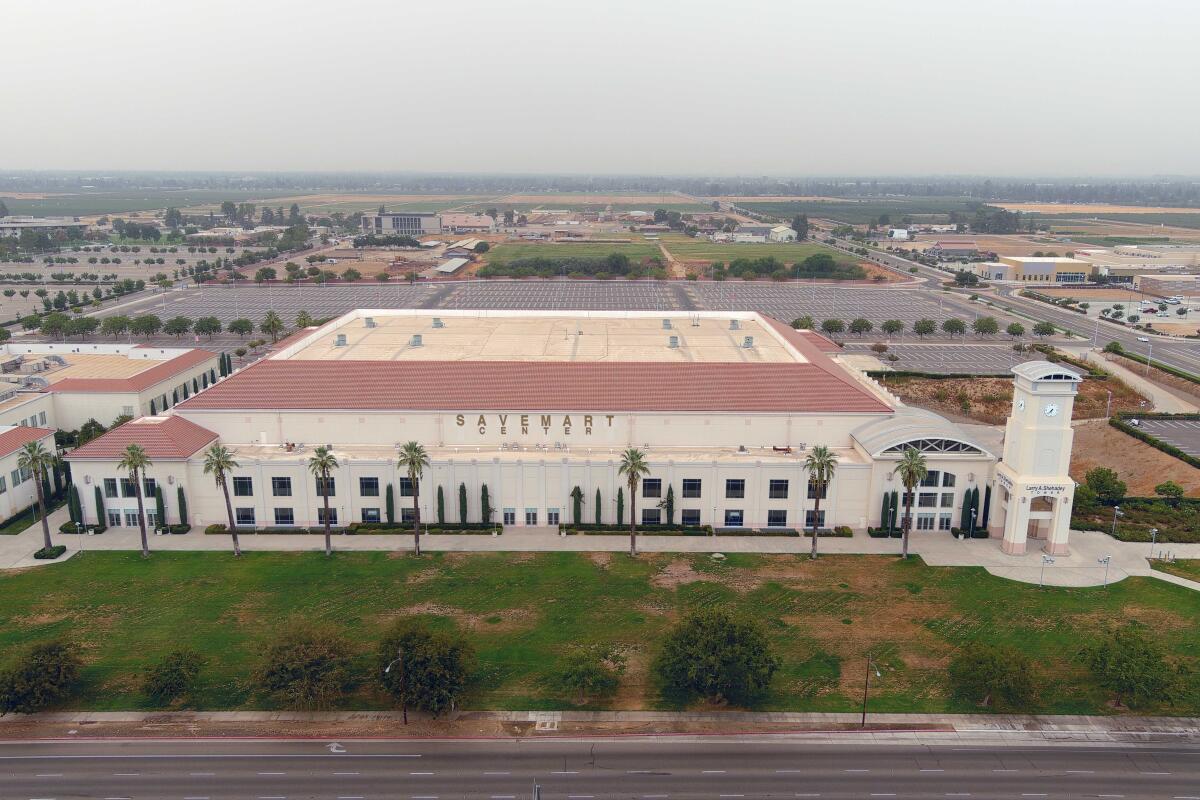Four high-ranking men at CSU campuses were accused of sexual harassment. All were treated differently

The four were all high-ranking men at different California State University campuses — three were vice presidents for student affairs.
Each was accused of inappropriately touching women. And each case was handled differently.
Two of the accused men were allowed to continue working while under investigation, but a third was placed on leave. Two campuses hired outside firms to investigate, another farmed its investigation out to a different campus. In the fourth case, no formal investigation was even conducted.
Hundreds of pages of investigative reports, settlement documents and other records released to The Times, as well as interviews with experts and former university officials who oversaw such cases, highlight the inconsistent manner in which the California State University system investigates and resolves sexual harassment complaints across its 23 campuses.
Officials in the nation’s largest four-year public university system say they have a detailed sexual harassment policy and follow education code and labor agreements during investigations, but they acknowledge that they provide virtually no additional written guidance in crucial areas, such as launching investigations or disciplinary measures that should be considered when allegations are confirmed.
In the four cases reviewed by The Times, one man was accused of giving lingering hugs and asking a woman what type of lingerie she wore; another allegedly caressed a woman’s thigh during a university event; and a third was accused of moving his hand up another employee’s thigh while talking to her about job opportunities.
Recent revelations about how California State University handled sexual harassment and workplace retaliation complaints have rocked the nation’s largest four-year public university system.
In the two cases in which misconduct was found to have been “severe, persistent or pervasive,” one university, which previously provided its administrator with executive coaching before any investigation, allowed him to retire with a lucrative payout and letter of recommendation; the other allowed its administrator to resign with a negotiated payout and paid time off before his leaving.
“It’s troubling. There should be clearer standards,” said Loyola Law School professor Laurie Levinson. “You don’t want every campus creating their own approach.”
Providing clearer guidance would help ensure a more consistent and fair process for everyone involved, including students, said Sharon Reiter, a former associate vice president at Cal Poly Pomona who oversaw sexual harassment investigations for several years before retiring in 2020.
“They really need the guidance so there’s consistency,” she said.
Title IX experts acknowledged that investigators have to take into account the specific circumstances of every allegation and that subjectivity will always play some role in deciding how to handle each case. But, they said, there should be some consistency about when investigations are launched, who conducts those investigations and what action is taken when misconduct is confirmed.
“What is important is that policies are as clear as they can be,” said Shiwali Patel, director of justice for student survivors and senior counsel for the National Women’s Law Center.
Cal State officials said they do not track sexual harassment and retaliation cases systemwide or the taxpayer money that has been paid to settle legal claims and lawsuits. But news reports and records so far released by CSU show that in the last three years, the university system has paid nearly $7 million to resolve cases related to sexual harassment and retaliation.
The CSU has hired an outside firm to review how Title IX cases involving sexual and gender harassment are handled by campuses, after recent controversies that have rocked top leadership. Joseph I. Castro stepped down as chancellor in February amid outcry over his handling of sex harassment and workforce bullying accusations against a top Fresno State official while he was president of the campus.

Scandal has also shaken the Sonoma campus after sexual harassment allegations leveled against President Judy Sakaki’s husband, lobbyist Patrick McCallum, who was considered an official university volunteer.
Cal State paid $600,000 this year to settle a claim by former Provost Lisa Vollendorf, who alleged retaliation by Sakaki, her boss, after she reported to officials in the chancellor’s office that several women had accused McCallum of unwanted touching and making sexual comments.
Settlement records show women alleged that McCallum talked about his sex life, ran his fingers through one woman’s hair in an intimate fashion and then made “inappropriate personal comments” about her appearance during a party at his house. Sakaki and McCallum, who have since separated after a Times investigation detailing the settlement, have denied the claims.
The chancellor’s office said the system’s Title IX officer decided against launching a formal investigation because the women did not want to go forward with an inquiry, which would have required statements with their names. Sakaki spoke to her husband after learning about the allegations, but no further action was taken, the CSU said.
Art pieces from a collection donated to Sonoma State were moved to President Judy Sakaki’s home, where they were destroyed in the 2017 Tubbs fire.
Two state senators have called on Sakaki to step down after a faculty vote of no confidence in her leadership.
Documents obtained by The Times under the state’s open records law show that allegations at three other campuses were handled very differently.
Wm. Gregory Sawyer was a respected leader at Cal State’s Channel Islands campus. Known by many students as “Doc,” he was the campus’ founding vice president for student affairs.
But shortly after Sawyer was appointed to the same position at Sonoma State in early 2018, his former campus launched an investigation into allegations of sexual harassment after a woman came forward with complaints.
Channel Islands hired an outside firm to investigate. Sawyer was on medical leave for some time during the investigation but was otherwise allowed to return to work on the Sonoma campus, the records show.
Witnesses alleged conduct that crossed the professional line. One woman said Sawyer once tossed a Victoria’s Secret catalog onto her desk and, referring to a page displaying thong underwear, asked if she wore that type of lingerie, the records show.
Sawyer denied sexually harassing women or acting inappropriately. In an email to a Times reporter, he called the allegations “baseless” but declined further comment about the complaints.
The move follows a Times investigation which reported that CSU has paid more than $4 million to 11 former executives since 2015 with little accountability.
The investigation concluded that Sawyer engaged in inappropriate behavior with two women on campus, including giving unwelcome hugs, calling one “feisty,” “spicy” and “sassy” and looking at her in a way she perceived as sexual, the records show.
After reviewing the investigation’s findings, records show, Channel Islands officials determined that Sawyer’s conduct was unprofessional but did not amount to sexual harassment because it “did not rise to the level of being so severe and pervasive.”
Sawyer received no discipline. Sakaki communicated her expectations of him, a campus spokesperson said, but did not require him to undergo corrective action, such as counseling or executive coaching.
At Chico State, records show, an employee alleged in 2019 that Milton Lang, then vice president for student affairs, twice touched her thigh at a university event. He put his hand on top of her jeans and caressed her thigh with his thumb. After she placed her hand on her thigh to prevent him from touching her again, she said, he placed his hand over hers.

Lang apologized to the woman the next day for “bumping her knee,” the woman told an investigator, a comment she believed to be an attempt to protect himself, according to the records. Lang disputed the claim that the touch was anything but accidental. The woman said that she was “in shock” at the time of the incident, and in the aftermath said that she no longer felt safe to be on campus for fear that Lang would retaliate against her.
The investigation was conducted by a staffer from Sacramento State University, the records show. Lang was allowed to remain working. He did not supervise the woman or regularly interact with her on campus, a Chico State spokesperson said.
The investigation found the woman to be credible, noting her distressed conversations about the incident with others immediately after. The investigator found that Lang sexually harassed the woman, violating CSU policy. Lang was placed on paid administrative leave for three months after the investigation. He agreed to resign with a payout of more than $42,000.
Lang did not respond to requests for comment.
At Fresno State, allegations of misconduct against its vice president for student affairs, Frank Lamas, went back years, according to records released by the university. After receiving anonymous allegations of bullying and inappropriate comments from 2014 to 2016, Castro, then campus president, didn’t launch an investigation but instead instructed Lamas to undergo training from an outside consultant involving harassment and workforce discrimination. Findings from a university-commissioned survey did not name Lamas but had referenced a hostile work environment and sexist comments in the student affairs department prior to the training.

In October 2019, a woman filed a formal complaint alleging that Lamas touched her knee and moved his hand up her thigh in a car while talking to her about job prospects, the records show. She said the incident came after at least two years of unwelcome encounters that included touching her shoulder while adjusting her bra strap, grabbing her arm, touching her lower back and putting his arm around her even after she asked him not to touch her.
Castro immediately placed Lamas on leave while the university ordered an investigation by an outside firm, which concluded that the allegations were credible. In interviews with The Times, Lamas has disputed the findings and provided emails from officials commending his work.
In 2020, Castro quietly approved a $260,000 payout for Lamas in exchange for him giving up lifetime tenure faculty rights, along with a retirement package and glowing letter of recommendation. Weeks later, Castro became chancellor of CSU. He previously told The Times that he was advised by the prior chancellor, Timothy P. White, who authorized the settlement with Lamas.
Assemblyman Rudy Salas (D-Bakersfield), who chairs the Joint Committee on Legislative Audit and is among dozens of state lawmakers calling for an independent audit of how the CSU handles sexual harassment cases, told The Times he was concerned about the different approaches the campuses took to similar types of allegations. The manner in which CSU officials investigate complaints, he said, “reeks of inconsistencies and bias.”
“That’s why we want the independent auditor to go in and not only identify the inconsistencies,” he said, “but to make recommendations on policies and procedures to create consistency [and] accountability.”
More to Read
Sign up for Essential California
The most important California stories and recommendations in your inbox every morning.
You may occasionally receive promotional content from the Los Angeles Times.














